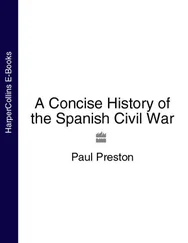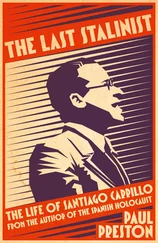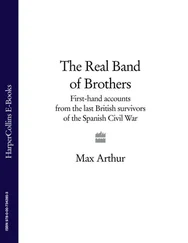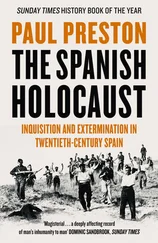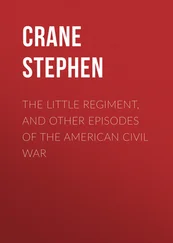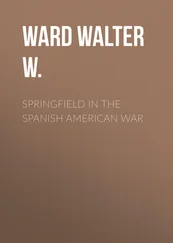Several issues were to cause friction between the Republic and the armed forces but none more than the new regime’s readiness to concede regional autonomy. On 14 April, Colonel Macià, the leader of the Catalan Esquerra Republicana de Catalunya (Republican Left of Catalonia), declared an independent Catalan republic. A deputation from Madrid persuaded him to await government action by promising a rapid statute of autonomy. Inevitably, this aroused the suspicions of the army which had shed so much blood in the fight against Catalan separatism. To make matters worse, the Minister of War, Azaña, began in May to prepare reforms to cut down the inflated officer corps and to make the army more efficient. It was thereby hoped to reduce the political ambitions of the armed forces. It was a necessary reform and, in many respects, a generous one, since the eight thousand surplus officers were retired on full pay. However, military sensibilities were inflamed by the insensitivity with which various aspects of the reforms were implemented. Azaña’s decree of 3 June 1931 insisting on the so-called revisión de ascensos (review of promotions) reopened some of the promotions on merit given during the Moroccan wars. Many distinguished right-wing generals including Francisco Franco faced the prospect of being reduced to the rank of colonel. The commission carrying out the revision took more than eighteen months to report, causing unnecessary anxiety for the nearly one thousand officers affected, of whom only half had their cases examined. On 30 June 1931, Azaña closed the General Military Academy in Zaragoza for budgetary reasons and because he believed it to be a hotbed of reactionary militarism. This guaranteed Azaña the eternal enmity of its Director, General Franco.
Since Azaña’s reforms involved the abolition of the army’s jurisdictions over civilians thought to have insulted it, many officers regarded them as a savage attack. Those who were retired, having refused to take the oath of loyalty to the Republic, were left with the leisure to plot against the regime. This was encouraged by the conservative newspapers read by most army officers, ABC, La Época and La Correspondencia Militar , which presented the Republic as responsible for the economic depression, for the breakdown of law and order, and for disrespect for the army and anti-clericalism. In particular, a campaign was mounted alleging that Azaña’s intention was to ‘triturar el Ejército’ (crush the army). Azaña never made any such remark, although it has become a commonplace that he did. In fact, far from depriving the army of funds and equipment, Azaña, who had made a lifetime study of civil–military relations, merely ensured that the military budget would be used more efficaciously. If anything, Azaña tended to be punctilious in his treatment of a shambolic and inefficient force which compared poorly with the armies of countries like Portugal or Romania. Ironically, the military readiness of the Spanish army in 1936 owed as much to the efforts of Azaña as to those of his successor, the rightist José María Gil Robles. Azaña was converted by the rightist propaganda machine into the bogey of the military because he wanted to provide Spain with a non-political army. For the right, the army existed above all to defend their social and economic interests. Azaña was therefore presented as a corrupt monster, determined to destroy the army, as he was allegedly determined to destroy the Church, because it was part of the Jewish–Bolshevik–Masonic conspiracy to do so. Curiously, he had a much higher regard for military procedures than his predecessor, General Primo de Rivera. A general who presumed to ‘interpret the widespread feeling of the nation’ to Azaña was told forthrightly, ‘Your job is merely to interpret regulations.’ That was not how Spanish generals expected to be treated by civilians.
From the very first days of the Republic right-wing extremists disseminated the idea that an alliance of Jews, Freemasons and the working-class Internationals was conspiring to destroy Christian Europe, with Spain as a principal target. Anti-semitism, even in a country whose Jews had been expelled four and a half centuries earlier, was a potent weapon. Already in June 1931 the Carlist newspaper El Siglo Futuro had denounced Niceto Alcalá Zamora, Miguel Maura and his Minister of Justice, Fernando de los Ríos, as Jews. The Catholic press in general made frequent reference to the Jewish–Masonic–Bolshevik conspiracy. The Editorial Católica, which owned a chain of newspapers including El Debate , would soon be publishing the deeply anti-semitic and anti-masonic magazines Gracia y Justicia and Los Hijos del Pueblo . Even the more moderate Catholic daily, El Debate , referred to De los Ríos as ‘the rabbi’. The attribution of the Republic’s reforming ambitions to a sinister foreign Jewish–Masonic–Bolshevik plot made it that much easier to advocate violence against it. As this propaganda intensified over the next five years, the conviction grew on the extreme right that the Spanish supporters of this filthy foreign conspiracy had to be exterminated.
Such propaganda was soon widespread. However, the first major political contest of the Republic had taken place before the right was properly organized. The June 1931 elections were won by the Socialists in coalition with the left Republicans. Republicanism tended to be a movement of intellectuals and the petty bourgeoisie, more an amorphous improvised grouping than a united left-wing force. The only centre grouping, the Radicals, had, on the other hand, started out as a genuine mass movement in Barcelona in the early years of the century. Led by the fiery orator and corrupt machine politician Alejandro Lerroux, the Radicals were to become progressively more conservative and anti-Socialist as the Republic developed. They did immense damage to the Republic by their readiness to opt for the winning side at any given time. The polarization brought about by the pendulum effect of a big left-wing victory in the 1931 elections followed by an equally dramatic rightist triumph in 1933 was greatly intensified by the fact that the Radicals had changed sides.
The centrifugal dynamic of Republican politics was in itself the inadvertent consequence of a set of electoral regulations which were drawn up in such a way as to avoid the political fragmentation that destroyed the Weimar Republic. To ensure strong government majorities, in any given province, 80 per cent of the seats were given to the party or list with most votes over 40 per cent of those cast. The other 20 per cent block of seats went to the list that was second past the post. Accordingly, small fluctuations in the number of votes cast could lead to massive swings in the number of parliamentary seats actually won. The pressure to form coalitions was obvious. The elections of 28 June 1931 for the Constituent Cortes therefore registered a heavy victory for the broad coalition of Socialists, the left Republicans and the Radicals, with a total of 250 seats. The PSOE had gained 116 seats. In the flush of victory, little thought seems to have been given by the Socialist leadership to the long-term implications of the fact that Lerroux’s Radicals, with a campaign that was unashamedly conservative, not to say right wing, had gained ninety-four seats and become the second largest party in the Constituent Cortes. The somewhat heterogeneous right gained only eighty seats. By 1933, however, the success of rightist tactics in blocking reform and the consequent disappointment of the left-wing rank and file had provoked a significant realignment of forces. By then, the anarchists who had voted for the leftist parties in 1931 were committed to abstention. The Socialists had so lost faith in the possibilities of bourgeois democracy that they refused to make a coalition with the left Republicans. The apparatus of the state would thus be allowed to slip out of the grasp of the left in the November 1933 elections.
Читать дальше



